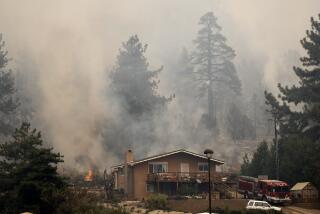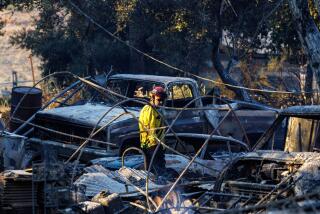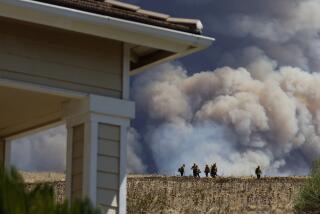L.A. Now Live: Latest on Powerhouse fire and why it grew so fast
The Powerhouse fire in the Antelope Valley has burned more than 32,000 acres, destroyed six homes and injured three people.
Join us at 9 a.m. as we discuss the latest on this costly blaze with Times reporter Hector Becerra, who will chat about the conditions that contributed to its quick expansion.
The fire was pushed by hot winds but also a potent combination of dense chaparral—some of which hasn’t burned since 1929—and highly flammable grasses.
This old chaparral, with layer upon layer of dead growth underneath, has proven difficult to fight. More water drops are needed to extinguish flames, and fire crews have found it hard to cut through.
“That stuff is so dry it just breaks in your hands,” said Chuck Tobias, spokesman for the Fresno Fire Department as he snapped a gray-white twig and crumbled it between his fingers at the fire base camp Monday. “It lights off like a Roman candle.” Fresno firefighters are among those trying to gain control over the blaze.
There has been much debate over the years about whether modern firefighting practices — stopping the flames as quickly as possible — can result in larger wildfires later as brush grows unchecked. In some remote areas of the West, fires are allowed to burn. But Nathan Judy, spokesman for the U.S. Forest Service, said Southern California is simply too populated to adopt that strategy.
Chaparral tends to grow taller as it ages, collecting dead material below it.
“So it ends up being more volatile,” said Neil Sugihara, a regional fire ecologist for the U.S. Forest Service. “The overall fuel load on the site becomes much higher and taller, so you get a lot higher fire intensity and a lot more energy released.”
More to Read
Sign up for Essential California
The most important California stories and recommendations in your inbox every morning.
You may occasionally receive promotional content from the Los Angeles Times.










